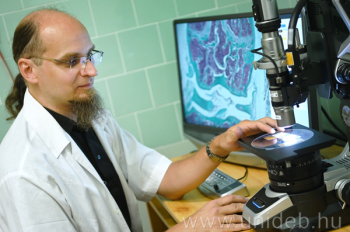
Understanding Cartilage Degeneration and Its Impact on Joint Health
Cartilage loss remains one of the most challenging issues in orthopedic medicine, primarily due to its association with osteoarthritis—a degenerative joint condition that affects millions worldwide. As populations age and lifestyles become more sedentary, the prevalence of osteoarthritis continues to rise, leading to increased disability and healthcare costs. Recent research from the University of Debrecen sheds light on the intricate changes occurring in bone structures during cartilage degradation, providing valuable insights for future diagnosis and treatment strategies.
If you’re interested in how cutting-edge research can influence clinical approaches to joint health, explore the University of Debrecen’s cartilage loss research programs to learn more about ongoing advancements and potential therapeutic developments.
Key Findings from Recent Cartilage Loss Studies at the University of Debrecen
Innovative Research Methodologies
The research team led by assistant professor Tamás Oláh has systematically collected and analyzed a vast array of scientific publications—out of approximately six thousand articles, only 134 met rigorous criteria focusing on bone structure changes associated with cartilage loss in animal models. Such meticulous selection enabled a detailed understanding of how different experimental approaches influence the interpretation of cartilage and subchondral bone alterations.
Using small animal models like mice and rats, the researchers evaluated various methods to induce osteoarthritis, including medial meniscal destabilization in mice and meniscal transection in rats. They examined how these models induce microstructural changes in subchondral bone— the layer situated just below the cartilage— which plays a vital role in the progression of osteoarthritis.
Significant Advances in Understanding Bone Microstructures
The investigation revealed different patterns of bone changes across species. In mice, osteoarthritis was characterized by the disappearance of smaller bone scaffolds and a thickening of the bone tissue over time. Conversely, in rats, the progression involved degradation initially, followed by later thickening of the subchondral bone. These findings highlight that disease mechanisms can vary significantly depending on the species and experimental design.
Such insights are crucial for translating preclinical findings into human therapies, as they emphasize the importance of selecting appropriate models and interpreting results within a broader biological context.
Implications of Bone Changes in Osteoarthritis Development
Microstructural Changes as Diagnostic Markers
The structural alterations in subchondral bone are not merely consequences of cartilage wear but are actively involved in disease progression. Thinning or thickening of bone tissue can influence the mechanical stability of joints, potentially exacerbating cartilage degeneration.
Understanding these microstructural dynamics offers opportunities to develop early diagnostic tools— detecting changes in bone architecture may reveal osteoarthritis in its initial stages, even before significant cartilage loss occurs. Imaging technologies such as micro-CT scans and advanced MRI techniques are increasingly capable of capturing these subtle changes.
Potential for Targeted Treatments
Insights from the University of Debrecen’s research suggest that interventions aimed at modifying bone remodeling could slow or halt osteoarthritis progression. Pharmacological agents or biological therapies that regulate subchondral bone turnover may serve as adjuncts to cartilage repair strategies, addressing disease mechanisms from multiple angles.
Designing Better Experiments and Improving Clinical Outcomes
One of the key lessons from this research is the critical importance of proper experimental design. Comparing unoperated control groups with surgically induced models ensures reliability and transparency in results, which is essential for translating findings from animals to humans.
Researchers emphasize that choosing appropriate animal models and standardized surgical procedures enhances the reproducibility of studies and their relevance to human osteoarthritis. This meticulous approach helps to identify the most promising therapeutic targets and reduces the risk of translating ineffective treatments into clinical practice.
Future Directions and Clinical Relevance
The ongoing research at the University of Debrecen aims to include human data, bridging the gap between animal models and patients. The team is currently conducting studies involving human tissue samples and clinical data to validate their findings further.
These efforts underscore the potential for developing diagnostic markers that detect bone microstructure changes early and for creating personalized treatment regimens based on a patient’s specific disease stage and bone health.
How to Stay Updated and Get Involved
For healthcare professionals, researchers, or students interested in the latest advancements in cartilage and bone research, following universities like Debrecen provides valuable insights into the future of osteoarthritis diagnosis and therapy. You can explore related research articles, attend academic conferences, or participate in collaborative studies to contribute to this evolving field.
Furthermore, if you are seeking specialized training or want to engage with ongoing clinical trials, visit the University of Debrecen’s research portal or contact their faculty of medicine for more information.
Concluding Thoughts: The Path Toward Better Joint Health
Advancements in understanding the microstructural changes in bones associated with cartilage loss bring us closer to more effective diagnostic tools and targeted treatments for osteoarthritis. The research conducted by the University of Debrecen exemplifies the importance of rigorous scientific inquiry, collaborative effort, and innovative methodologies in tackling a disease that significantly impacts quality of life for many individuals worldwide.
To stay informed about these developments and explore educational opportunities, consider submitting your application today or reaching out for further consultation.

